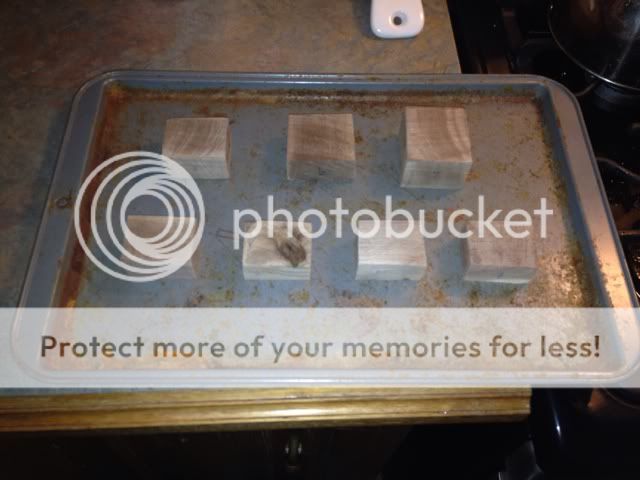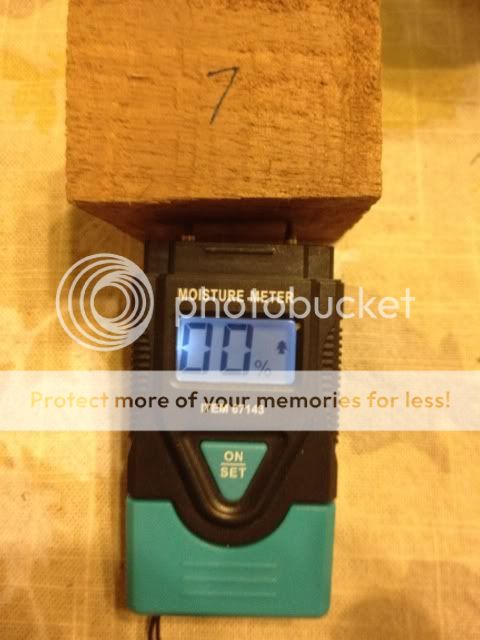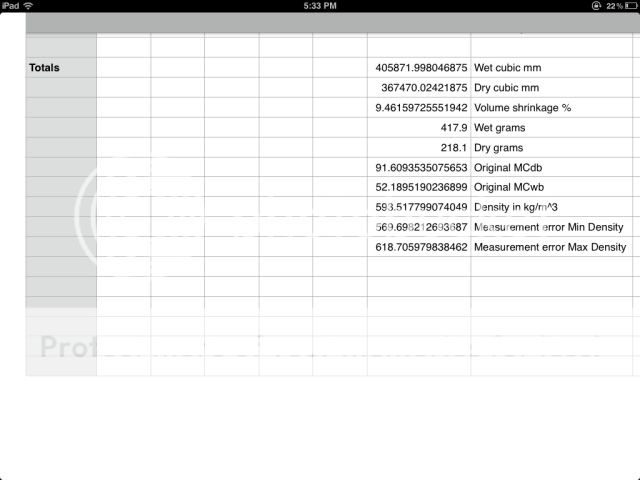Jack Wagon said:
Yes while it was clear in my head that a larger sampling size would be needed. I think it looked like I was saying a single sample.
Volatiles mass will be lost whether chips or chunks. They will be driven off well before the water. It may be easier to lose volatiles with a larger surface area however there is the problem of retaining water with a sample of equivalent mass and lesser surface area. Depending on the size and density of a chunk of wood there is the possibility of drying the outside while leaving the inner part of the chunk "wet".
I found this article while avoiding helping my wife pack up her glass shop. It addresses all of the issues you brought up.
http://ir.library.oregonstate.edu/x...d=D92E7DDE11355DA0B69627A9B6ADB50E?sequence=1
For a 5 gr sample, the scale should be able to accurately read in 5 mg increments. Danno's scale is only readable in 100 mg increments. The article explains why in the text:
In general, the scale should read to 1 part in 1000 for the oven-dry weight of the sample to give accuracy to the nearest 0.1% moisture content. This should be adequate for any mill measurement and, in fact, is as accurate as we ever try to get at the university. So, if the oven-dry sample weight will always be more than 1000 g (2.2 Ibs), the a scale that reads to 1 gram is very adequate.
True, you can take a large number of small samples and average them. Statistically, the round ups should be close to the round downs if the quantity of samples is large enough, but nothing will be as accurate as just using a sample weight that matches the range and accuracy of the scale being used.
They also show a couple of examples where both the oven-dry method and the desiccation method were used on shavings, and there were large errors with the oven-dry method on shavings.
Since there was no pattern to the data, about the only conclusion we can make is that the oven dry method may at times drive volatile compounds out of samples and therefore cause too high of a moisture content to be calculated. This is probably not as much of a problem with lumber samples since they are many times thicker than shavings.
It is a good article that explains the reason why wood dries. It is all about relative humidity. Even in an oven, wood can fail to dry to completion if there is enough humidity in the air to raise the RH inside the oven to above 0%. And no matter how hot your wood gets in the sun, or how windy your location is, if the average RH in your area is above a certain amount, no amount of heat and wind can ever bring it down below the EMC associated with that RH.
They even touch on one of the most hotly debated topics in firewood:
Oregon white oak was being dried in a small kiln near Corvallis. The kiln operators were having trouble believing that it could dry so slowly.
;-P
And to further confuse us all, they introduce yet another basis by which to express MC in wood -
bone-dry basis. Apparently, bone-dry is the oven-dry weight divided by the green weight. Rest assured, I will not be expressing MC here at any time in the future using MCbdb. :lol:
Bottom line is that no method is 100% accurate, but the standard method (as outlined in ASTM D4442) of weighing a chuck of wood, drying it in an oven until it stops losing weight, and then calculating the final MC by using a specific formula that uses both weights, is probably the very best way to determine if your firewood is down to 20% MCwb.






